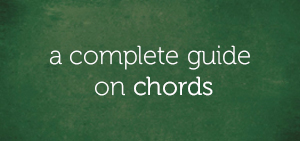The half-step distance can be mastered on the keyboard using the chromatic scale.
Distinguishing between half-step and whole-step distances on the keyboard can be challenging for a vast majority of beginners.
I’ve come across lots of students in the past who are confused about half-step distances and the chromatic scale has helped them and that’s the reason why I’m very certain that you’ll find this lesson helpful if you belong to the category of students who find half-step distances challenging.
But before we go into all what we have to learn, let’s talk about the half-step distance.
A Short Note On The Half-Step Distance
There are twelve notes in an octave.
For example, the C-C octave:
…consists of the following notes:
“Check Them Out…”
C:
Db:
D:
Eb:
E:
F:
Gb:
G:
Ab:
A:
Bb:
B:
…and the distance between any of these notes that are adjacent to each other is a half-step distance.
Attention: Keep in mind that there are twelve half-step distances in an octave and the half-step is the shortest possible distance between notes.
The Chromatic Scale — Explained
The term chromatic means colorful in its literally sense.
However, in music theory, it is used to describe ideas (be it a note, scale, interval, chord, progression, etc.) that are foreign to the prevalent key.
Let’s define the chromatic scale.
“So, What’s The Chromatic Scale?”
Although the term “chromatic scale” can be used generically to describe any scale that consists of notes that are foreign to the key, it is specifically used to describe the scale that consists of all the notes in an octave separated by half-steps distances.
So, starting from C and ending on C:
…with all the seven scale tones in the key of C major:
…and five chromatic notes (that are foreign to the prevalent key):
…in this fashion:
…produces the chromatic scale in ascending and descending order.
“How Many Chromatic Scales Are On The Keyboard?”
There’s only one chromatic scale on the keyboard and this is because all chromatic scales are made up exactly the same components.
However, you can start and end the chromatic scale on any of the twelve notes.
The C chromatic scale and the Db chromatic scale:
C chromatic scale:
Db chromatic scale:
…are basically made up of the same note. The former starts and ends on C, while the latter starts and ends on Db.
Three Chromatic Scale Exercises For The Mastery Of Half-Steps
There are three chromatic exercises in this segment and I guarantee you that once you master all three exercises, you’ll NEVER miss a half-step again.
Exercise #1
Play the following chromatic scales:
C chromatic scale:
Eb chromatic scale:
Gb chromatic scale:
A chromatic scale:
This exercise has four parts and each part has a chromatic scale starting from each of the tones of the C diminished seventh chord:
You should be able to remember all the parts if you can remember the C diminished seventh chord.
Exercise #2
Exercise #2 consists of the following chromatic scales:
C# chromatic scale:
E chromatic scale:
G chromatic scale:
Bb chromatic scale:
This exercise has four parts and each part has a chromatic scale starting from each of the tones of the C# diminished seventh chord:
You should be able to remember all the parts if you can remember the C# diminished seventh chord.
Exercise #3
There are four chromatic scales in this exercise:
B chromatic scale:
D chromatic scale:
F chromatic scale:
Ab chromatic scale:
This exercise has four parts and each part has a chromatic scale starting from each of the tones of the B diminished seventh chord:
You should be able to remember all the parts if you can remember the B diminished seventh chord.
Final Words
It’s practically impossible to master the chromatic scale and not be able to distinguish half-step distances from every other distance on the keyboard — especially whole step distances.
Make sure that the exercises are properly played and mastered in such a way that you can play the chromatic scale starting from any note on the keyboard without little or no errors.
After a while, I guarantee that you’ll be able to determine the note that is a half-step away from any given note effortlessly.
All the best.
Chuku Onyemachi
Latest posts by Chuku Onyemachi (see all)
- The Formation Of Diminished Seventh Chords Used To Be Challenging Until I Did This
- How To Form Seventh Chords In Two Shakes Of A Dog’s Tail Using Third Intervals And The Circle Of Fifths Chart
- I Played The 13sus4 Chord And This Happened…
- How To Build Seventh Chords Like An Architect Using “Foundation And Structure” Concept
- This 4-Week Plan Will Help You Master All The Major Scales







Comments on this entry are closed.